The Ivy House, at the west end of High Street, is a grade II listed building described as ‘C18. Much altered in early C19, with later additions’. The Alton Society says that the empty property was ‘refaced in the 18th century in Alton’s only example of the ‘Gothick style’. The Ivy House and nearby Rawdon House are two of several 18th-century buildings in High Street. These two are former private residences lived in by the Dyer family, although neither building is ivy-clad today.
A plaque documenting the history of The Ivy House.
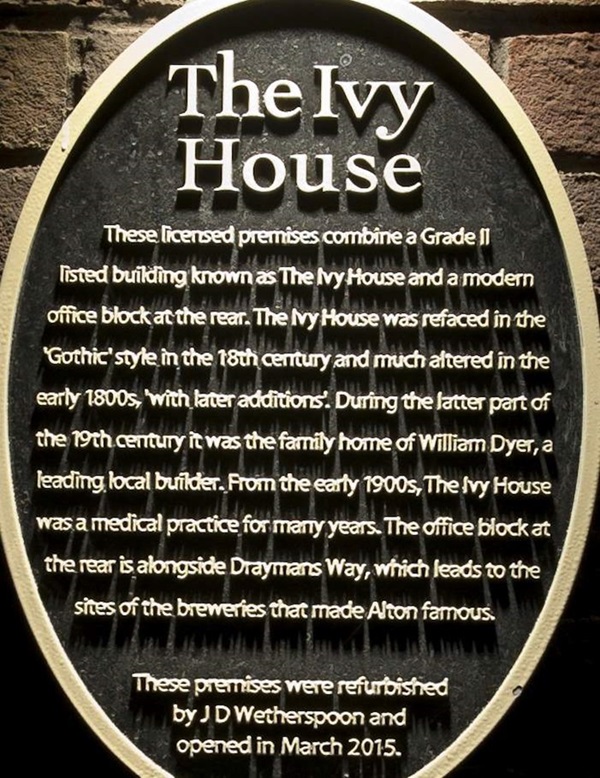
The plaque reads: These licensed premises combine a grade II listed building known as The Ivy House and a modern office block at the rear. The Ivy House was refaced in the ‘Gothic’ style in the 18th century and much altered in the early 1800s, with later additions. During the latter part of the 19th century it was the family home of William Dyer, a leading, local builder. From the early 1900s, The Ivy House was a medical practice for many years. The office block at the rear is alongside Draymans Way, which leads to the sites of the breweries that made Alton famous.
Text about the design of The Ivy House.
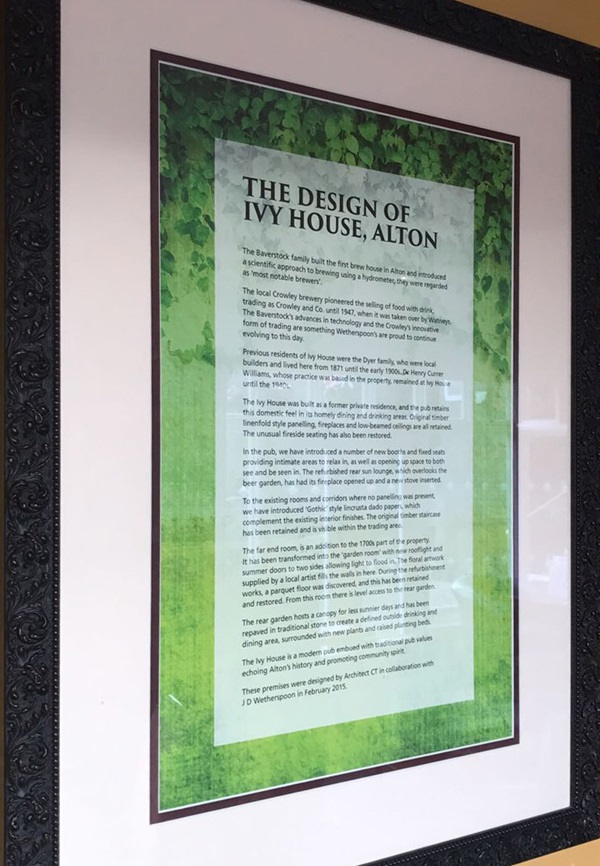
The text reads: The Baverstock family built the first brew house in Alton and introduced a scientific approach to brewing using a hydrometer, they were regarded as ‘most notable brewers’.
The local Crowley brewery pioneered the selling of food with drink, trading as Crowley and Co. until 1947, when it was taken over by Watneys. The Baverstock’s advances in technology
Previous residents of Ivy House were the Dyer family, who were local builders and lived here from 1871 until the early 1900s. Dr Henry Currer Williams, whose practice was based in the property, remained at Ivy House until the 1940s.
The Ivy House was built as a former private residence, and the pub retains this domestic feel in its homely dining and drinking areas. Original timber linenfold style panelling, fireplaces and low beamed ceilings are all retained. The unusual fireside seating has also been restored.
In the pub we have introduced a number of new booths and fixed seats providing intimate areas to relax in, as well as opening up space to both see and be seen in. The refurbished rear sun lounge, which overlooks the beer garden, has had its fireplace opened up and a new stove inserted.
To the existing rooms and corridors where no panelling was present, we have introduced ‘Gothic’ style lincrusta dado papers, which complement the existing interior finishes. The original timber staircase has been retained and is visible the trading area.
The far end room is an addition to the 1700s part of the property. It has been transformed into the garden room with new roof light and summer doors to two sides allowing light to flood in. The floral artwork supplied by a local artist fills the walls in here. During the refurbishment works, a parquet floor was discovered, and this has been retained and restored. From this room there is level access to the rear garden.
The rear garden hosts a canopy for less sunnier days and has been repaved in traditional stone to create a defined outside drinking and dining area, surrounded with new plants and raised planting beds.
The Ivy House is a modern pub embed with traditional pub values echoing Alton’s history and promoting community spirit.
These premises were designed by architect CT in collaboration with J D Wetherspoon in February 2015.
A photograph and text about Crowleys.
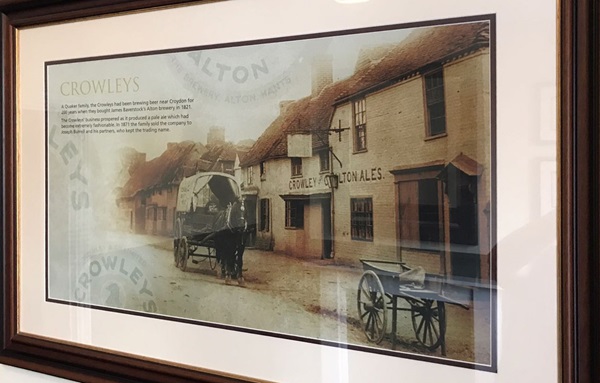
The text reads: A Quaker family, the Crowleys had been brewing beer near Croydon for 200 years when they bought James Baverstock’s Alton brewery in 1821.
The Crowleys’ business prospered as it produced a pale ale which had become extremely fashionable. In 1871 the family sold the company to Joseph Burrell and his partners, who kept the trading name.
Illustrations and text about Gilbert White.
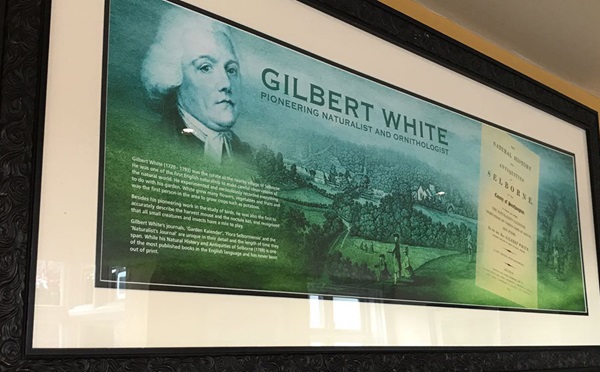
The text reads: Gilbert White (1720-93) was the curate at the nearby village of Selborne. He was one of the first English naturalists to make careful observations of the natural world. He experimented and meticulously recorded everything to do with his garden. White grew many flowers, vegetables and fruits and was the first person in the area to grow crops such as potatoes.
Besides his pioneering work in the study of birds, he was also the first in the area to grow crops such as potatoes.
Besides his pioneering work in the study of birds, he was also the first to accurately describe the harvest mouse and the noctule bat, and recognised that all small creatures and insects have a role to play.
Gilbert White’s journals, Garden Kalender, Flora Selborniensis and the Naturalist’s Journal are unique in their detail and the length of time they span. While his Natural History and Antiquities of Selborne (1789) is one of the most published books in the English language and has never been out of print.
A print and text about William Curtis.
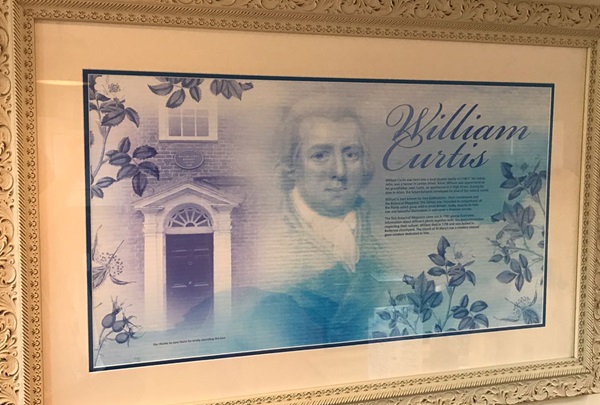
The text reads: William Curtis was born into a local Quaker family in 1746/7. His father, John, was a tanner in Lenten Street, Alton. William was apprenticed to his grandfather John Curtis, an apothecary at 4 High Street. During his time in Alton, the future botanist developed his love of the natural world.
William is best known for two publications – Flora Londinensis and the Botanical Magazine. The former was ‘intended to comprehend all the plants which grow wild in Great Britain’. Sadly, despite its folio size and beautiful illustrations it was never a financial success.
The first Botanical Magazine came out in 1787 giving illustrated information about different plants together with ‘the best information respecting their culture’. William died in 1799 and was buried in Battersea churchyard. The church of St Mary’s has a modern stained glass window dedicated to him.
Illustrations and text about Jane Austen.
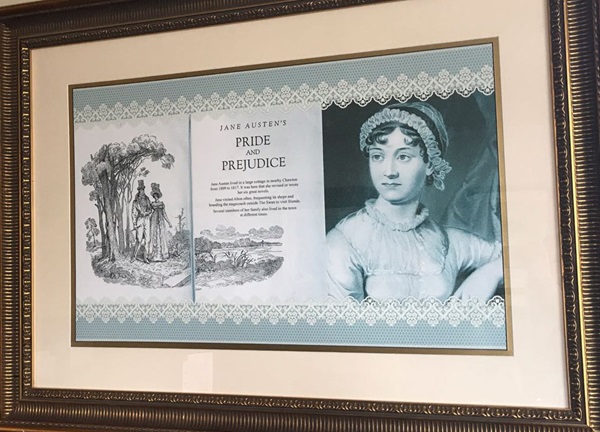
The text reads: Jane Austen lived in a large cottage in nearby Chawton from 1809 to 1817. It was here that she revised or wrote her six great novels.
Jane visited Alton often, frequenting its shops and boarding the stagecoach outside The Sawn to visit friends.
Several members of her family also lived in the town at different times.
Adverts promoting local businesses.
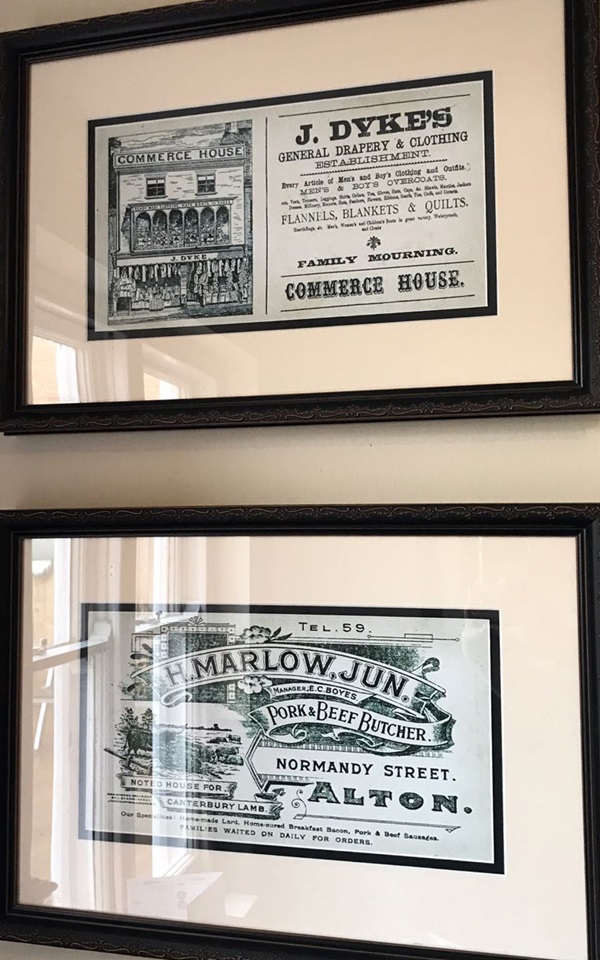
External photograph of the building – main entrance.
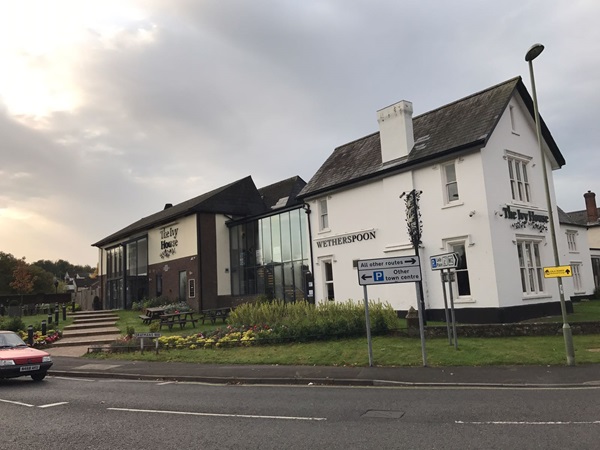
If you have information on the history of this pub, then we’d like you to share it with us. Please e-mail all information to: pubhistories@jdwetherspoon.co.uk